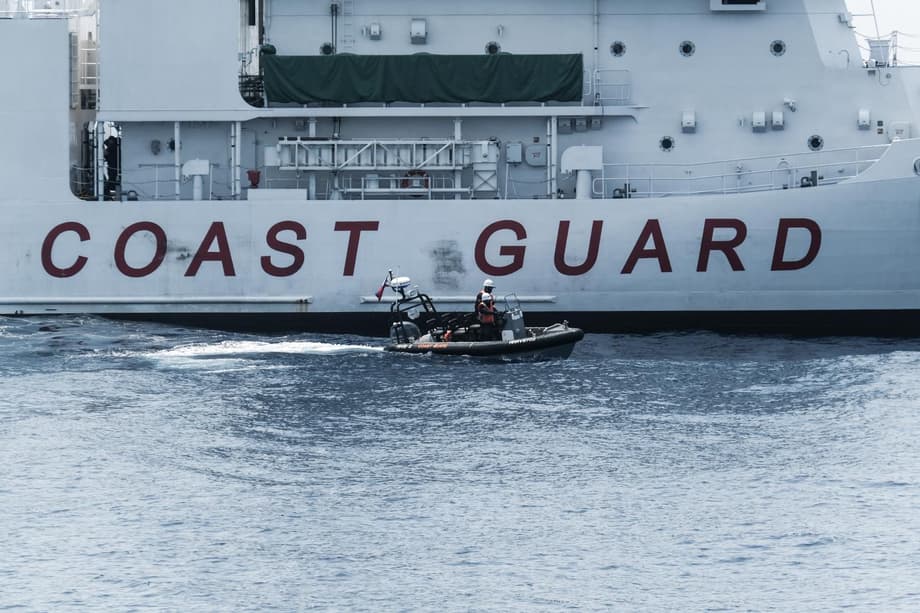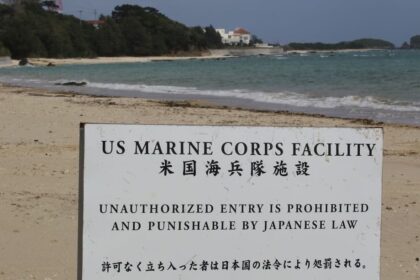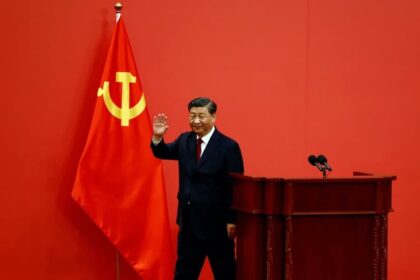A test of rules and resolve in the South China Sea
Confrontations near Scarborough Shoal, Second Thomas Shoal, and other contested features have turned the South China Sea into a running test of two very different ideas of maritime order. China frames foreign military flights and patrols inside the nine dash line as violations of sovereignty. The Philippines, Vietnam, Malaysia, Brunei, and partners such as the United States, Australia, Canada, and Japan say these operations sit within rights of navigation and overflight under the United Nations Convention on the Law of the Sea (UNCLOS). The result is frequent close encounters between coast guards, navies, and maritime militia that raise the risk of collisions, injuries, or worse.
- A test of rules and resolve in the South China Sea
- What the code can actually fix
- Why talks keep stalling
- Flashpoints and the cycle of action and reaction
- ASEAN unity and the 2026 goal
- Managing risk at sea while disputes persist
- The legal baseline that shapes claims and conduct
- How to lower the temperature now
- Key Points
Recent months brought a string of tense scenes. Philippines resupply runs to the grounded BRP Sierra Madre at Second Thomas Shoal faced ramming, blocking maneuvers, and water cannon blasts. Manila reported that Chinese personnel used bladed tools and forcibly seized equipment during a June 2024 confrontation. At Scarborough Shoal, Philippine patrols encountered powerful water jets and tight shadowing. China also scaled up the number of vessels around Sabina Shoal and announced new maritime rules that allow lengthy detention of foreign crews by its coast guard. Vietnam accelerated building works on its occupied features, including a new airstrip, to consolidate its own position. Each move triggers a response, and each response is read by the other side as proof of hostile intent.
Against this backdrop, the long discussed Code of Conduct (COC) between China and Southeast Asian states is promoted as a guardrail. Negotiators hope a COC can turn near misses into managed encounters. Yet the core problem sits deeper than procedures. Beijing treats several reefs, shoals, and waters as sovereign territory, not as disputed maritime zones. The Philippines and other states rely on UNCLOS and a 2016 arbitral award to argue that most of the area in question lies within their exclusive economic zones (EEZs) and international waters. The gap between these legal narratives explains why setbacks recur and why a text alone cannot settle the contest over rules at sea.
What the code can actually fix
Two decades of talks have converged on a basic idea. A COC is about conflict management, not about who owns which island or where to draw maritime boundaries. It would not change sovereignty claims. It would not rewrite UNCLOS. If it works, it would reduce the chance of dangerous incidents and help states keep talking during crises.
Tools that belong in a workable code
A credible COC could commit signatories to practical steps that make encounters safer and more predictable. These include maintaining freedom of navigation and overflight consistent with international law, exercising self restraint, refraining from occupying or building on uninhabited features, improving communication and safety protocols for both naval and law enforcement vessels, and training fishers to follow safety standards at sea. It could establish hotlines for crisis communication, joint incident investigation mechanisms, shared search and rescue procedures, and joint law enforcement training. It could create a pathway for cooperative marine scientific research and environmental protection, with clear rules on permission and data sharing. The code could also set a process for mediation if the parties disagree on how to interpret or implement its provisions. None of that settles sovereignty, but it can stop an accident from becoming a spiral.
Even a strong COC needs a careful design to avoid new disputes. The agreement should avoid prejudicing final settlements of claims or current legal positions. It should be flexible enough to allow detailed follow up talks on fisheries, oil and gas, and environmental conservation among only the states that actually have overlapping claims. In short, it should focus on safety and stability, while creating space for separate, technical arrangements that address daily frictions on the water.
Why talks keep stalling
Negotiations have dragged since the 1990s because the hardest questions sit at the heart of the South China Sea tensions. The first is geographic scope. China prefers a narrow scope with certain sensitive areas effectively off limits to the code. Claimants like the Philippines and Vietnam want all disputed features included so that the most volatile flashpoints are covered. The second is legal status. Several ASEAN states want a legally binding instrument with clear consequences for violations. China prefers a flexible document with political weight, not a treaty that could be used against it. The third is enforcement and dispute settlement. Any mechanism strong enough to matter would likely face resistance from at least one party. The fourth is the role of external militaries. China argues that outside navies should keep out of the code’s ambit, while some Southeast Asian states see external patrols, port calls, and exercises as essential to balance a stronger neighbor.
There is also a trust deficit shaped by experience on the water. The 2002 Declaration on the Conduct of Parties was meant to be a stepping stone. Since then, land reclamation, fortification of outposts, hazardous intercepts, and blockades have continued. Claimants have built up their presence, and big power rivalry has moved closer to the disputed sea. Every year of talks that does not change behavior makes it harder to believe that a new text will be honored when a tough choice arises at sea.
Flashpoints and the cycle of action and reaction
The most combustible friction points have changed little. Scarborough Shoal, seized by China after a 2012 standoff, sits off the Philippines’ main island. Second Thomas Shoal is home to the BRP Sierra Madre, a grounded and rusting ship that Manila uses as a small military outpost. Sabina Shoal has become a congregation area for Philippine resupply convoys and Chinese intercepts. In 2024, the number of Chinese vessels surged after confrontations, with episodes of ramming and repeated use of water cannon. Philippine crews reported injuries and damage to equipment. Manila responded by increasing patrols, deploying larger coast guard ships, and adopting a new Comprehensive Archipelagic Defense Concept that prioritizes presence, base upgrades, new sensors, and cooperation with partners.
External defense cooperation also grew. The United States expanded exercises with the Philippines and deployed the Typhon ground launched missile system to Philippine territory for training. Australia and Japan held joint sails and exercises with Philippine forces. Vietnam continued to consolidate its positions with construction on occupied features. These steps, while legal within national jurisdictions and partnerships, added to Beijing’s concern that rival militaries aim to hem in its operations near its claimed features.
Major democracies said they would not ignore coercive behavior. Leaders of the Group of Seven accused China of actions that endanger maritime security, including land reclamation, building of outposts, and using them for military purposes. They said Chinese forces have used coercive and dangerous tactics against other claimants and foreign vessels.
The G7 condemned illicit, provocative, coercive and dangerous actions that endanger maritime security, including land reclamation and the building of outposts for military use.
China rejects these characterizations. After a round of talks, Foreign Minister Wang Yi described the South China Sea as an Asian matter that should not be turned into a platform for great power rivalry or interference.
Asia is not an arena for big power rivalry.
For Manila, the solution must be both diplomatic and practical. President Ferdinand Marcos Jr. has tied his country’s chairmanship of the Association of Southeast Asian Nations in 2026 to a push for a real COC. He has said that the Philippines will sustain pursuit of a binding outcome and will not abandon efforts just because the process is slow.
Giving up is not an option.
ASEAN unity and the 2026 goal
ASEAN has spent decades trying to manage the South China Sea question without breaking the group’s consensus model. Different members have different stakes and different relationships with China. That makes a single voice hard to sustain when incidents flare. After the 2016 arbitration ruling in favor of the Philippines’ position on maritime entitlements, ASEAN did not collectively endorse the award. Statements often return to a baseline of respect for international law, freedom of navigation and overflight, and the need for self restraint. The approach keeps dialogue open, but it also leaves room for each capital to pursue its own mix of accommodation and resistance.
Even with that complexity, there are signals of momentum. Negotiators completed a third reading of the draft in recent months, and Malaysia’s current chairmanship is focused on steadying the process before handing the gavel to Manila for 2026. Chinese officials say they support finishing a COC with ASEAN, and they frame it as a sign of commitment to regional stability rather than a concession on claims.
After consultations with Beijing, Malaysia’s defense leadership relayed China’s message to the region as supportive of closing the talks.
China supports the formulation of the Code of Conduct and looks forward to its materialisation.
Whether that translates into compromises on scope, legal status, and the role of external powers remains uncertain. The calendar can motivate progress, but a deadline cannot bridge conceptual gaps by itself.
Managing risk at sea while disputes persist
The absence of a binding code does not leave navies and coast guards without any guidance. Maritime forces in the Pacific use the Code for Unplanned Encounters at Sea (CUES), a voluntary manual of safety and communication practices adopted in 2014. Southeast Asian navies also follow the ASEAN Navy Chiefs’ Guidelines for Maritime Interaction (GMI) from 2019, which aims to reduce miscalculation and improve predictability during routine interactions. These instruments are helpful, but they are nonbinding and do not address law enforcement confrontations, civilian resupply missions, or the behavior of maritime militia.
What crews rely on day to day
Hotlines between capitals and commands can de escalate tense moments if they are used quickly and with authority. Shared search and rescue drills build familiarity that can save lives when storms or collisions strike. Signal protocols, such as standard radio phrases and speed and distance rules during intercepts, help officers make safe choices even when orders are hard edged. When incidents do occur, neutral fact finding and post incident discussions can close the loop, reduce rumor, and set a pattern for the next encounter. These are the kinds of tools that a COC could embed more firmly, with standing playbooks and regular reviews to keep them current.
The legal baseline that shapes claims and conduct
Understanding the legal context helps explain why the narrative split is so wide. UNCLOS sets out maritime zones including the 12 nautical mile territorial sea, the 200 nautical mile exclusive economic zone, and continental shelf rights. It also defines how different types of features, such as islands, rocks, and low tide elevations, generate or do not generate maritime zones. In 2016, a tribunal convened under UNCLOS in a case brought by the Philippines found no legal basis for China’s nine dash line and concluded that several features could not generate EEZs. China rejected the award, but the decision has shaped how many states judge conduct at sea and how they calibrate their own operations inside disputed areas.
Legal positions and practice do not always align. China has announced baselines and domestic rules that other states say run counter to UNCLOS. Claimants at times enforce their own readings of the law with ships and aircraft. That makes the management problem hard. Even a robust COC with strong language would operate in a space where competing legal claims remain in play and where behavior on the water sets the tone for the next round of talks.
How to lower the temperature now
Even without agreement on the biggest questions, claimants can make narrow deals that pay dividends. Several steps would reduce risk quickly, signal good faith, and build habits of cooperation.
First, codify safety protocols for law enforcement encounters. A dedicated annex could spell out speed limits during intercepts, minimum separation distances, and radio phrases in both English and Chinese for coast guards and fishery enforcement vessels. Regular joint training would help crews apply the rules under pressure.
Second, expand search and rescue cooperation. A shared map of rescue assets and a common incident reporting format would shorten response times. Annual drills could rotate among claimants and include procedures for handling injured personnel and damaged vessels irrespective of flag.
Third, stand up a real time incident prevention and review mechanism. A small cell staffed by liaison officers from claimants could log events, coordinate hotline use, and recommend fixes. Findings would be nonbinding, but patterns would become visible and easier to address.
Fourth, agree on environmental and fisheries steps that do not prejudice claims. Seasonal fishing pauses, joint patrols against destructive methods, and shared monitoring of coral health would protect common resources while avoiding sovereignty language. Scientific research cruises with mixed crews could focus on data collection in areas of least friction.
Fifth, adopt predictable practices around military exercises and transits. Advance notifications for large exercises, pre agreed distances from occupied features, and rules for aircraft lighting and radio calls would add clarity. These do not limit lawful activity at sea or in the air, but they make intent easier to read.
None of these moves solve who is right about sovereignty. They do show that rivals can act responsibly while they argue. Progress on small steps can build confidence, and it can make a future COC more than a paper promise.
Key Points
- China and several Southeast Asian states hold opposing legal views of maritime order, with Beijing treating large areas as sovereign waters and others citing UNCLOS rights.
- The proposed Code of Conduct is a conflict management tool, not a mechanism to settle sovereignty or redraw maritime boundaries.
- Sticking points include the code’s geographic scope, whether it is legally binding, how to enforce it, and the role of external militaries.
- Flashpoints at Scarborough Shoal, Second Thomas Shoal, and Sabina Shoal saw ramming, water cannon use, and dangerous intercepts in 2024.
- The Philippines adopted a new defense concept and expanded cooperation with partners, while Vietnam accelerated construction on its occupied features.
- China says it supports finishing a COC with ASEAN, but its preferred approach diverges from several ASEAN claimants on core issues.
- CUES and ASEAN naval guidelines help manage encounters, yet they are voluntary and do not cover many law enforcement situations.
- The 2016 tribunal ruling invalidated the nine dash line, shaping many states’ conduct, while China rejects the award.
- Practical steps such as shared hotlines, search and rescue cooperation, safety protocols, and environmental measures can reduce risk now.
- ASEAN’s 2026 target under Philippine chairmanship could speed talks, but a deadline alone will not bridge fundamental differences.












